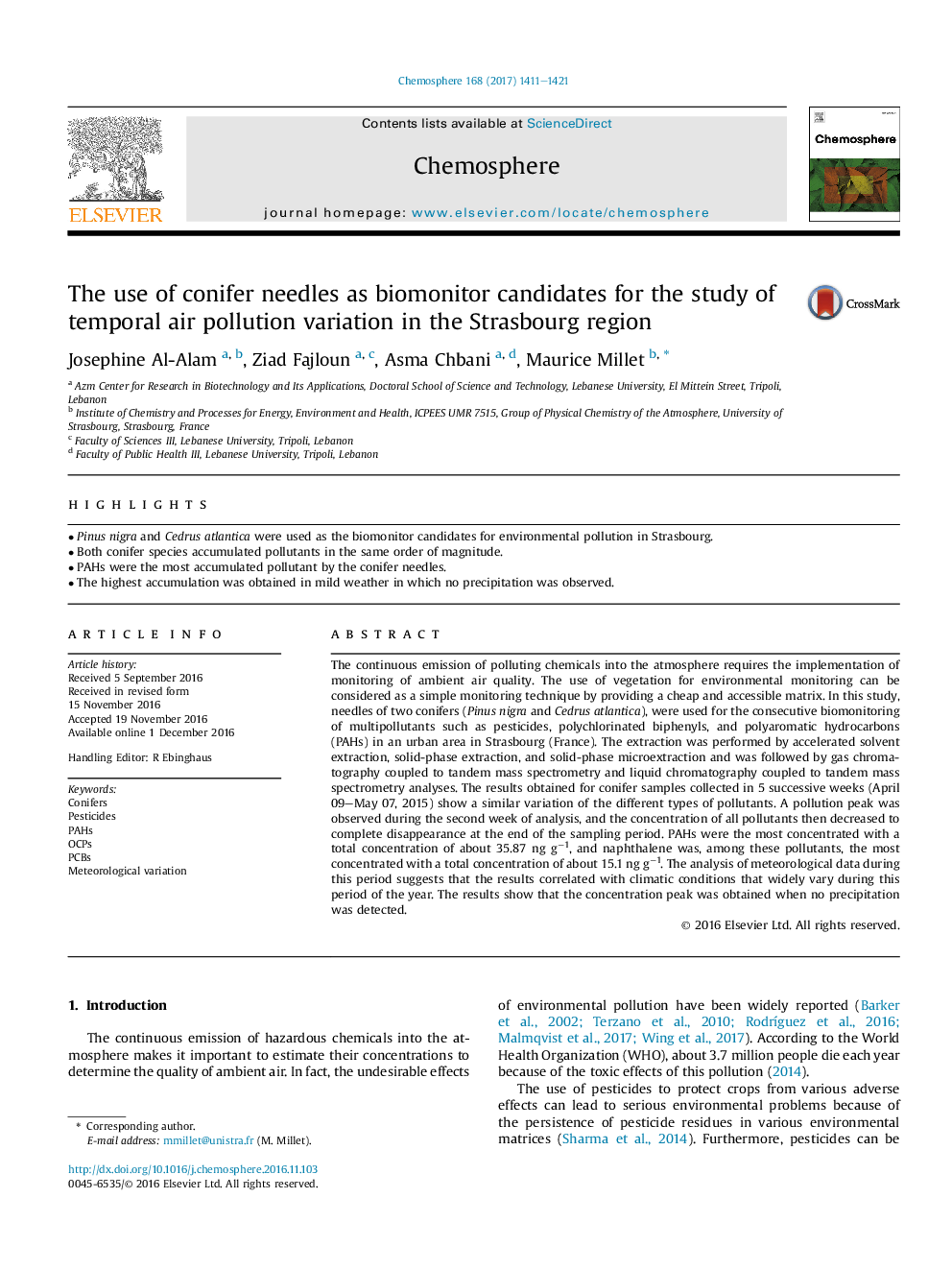| کد مقاله | کد نشریه | سال انتشار | مقاله انگلیسی | نسخه تمام متن |
|---|---|---|---|---|
| 5746641 | 1618803 | 2017 | 11 صفحه PDF | دانلود رایگان |
- Pinus nigra and Cedrus atlantica were used as the biomonitor candidates for environmental pollution in Strasbourg.
- Both conifer species accumulated pollutants in the same order of magnitude.
- PAHs were the most accumulated pollutant by the conifer needles.
- The highest accumulation was obtained in mild weather in which no precipitation was observed.
The continuous emission of polluting chemicals into the atmosphere requires the implementation of monitoring of ambient air quality. The use of vegetation for environmental monitoring can be considered as a simple monitoring technique by providing a cheap and accessible matrix. In this study, needles of two conifers (Pinus nigra and Cedrus atlantica), were used for the consecutive biomonitoring of multipollutants such as pesticides, polychlorinated biphenyls, and polyaromatic hydrocarbons (PAHs) in an urban area in Strasbourg (France). The extraction was performed by accelerated solvent extraction, solid-phase extraction, and solid-phase microextraction and was followed by gas chromatography coupled to tandem mass spectrometry and liquid chromatography coupled to tandem mass spectrometry analyses. The results obtained for conifer samples collected in 5 successive weeks (April 09-May 07, 2015) show a similar variation of the different types of pollutants. A pollution peak was observed during the second week of analysis, and the concentration of all pollutants then decreased to complete disappearance at the end of the sampling period. PAHs were the most concentrated with a total concentration of about 35.87 ng gâ1, and naphthalene was, among these pollutants, the most concentrated with a total concentration of about 15.1 ng gâ1. The analysis of meteorological data during this period suggests that the results correlated with climatic conditions that widely vary during this period of the year. The results show that the concentration peak was obtained when no precipitation was detected.
Journal: Chemosphere - Volume 168, February 2017, Pages 1411-1421
